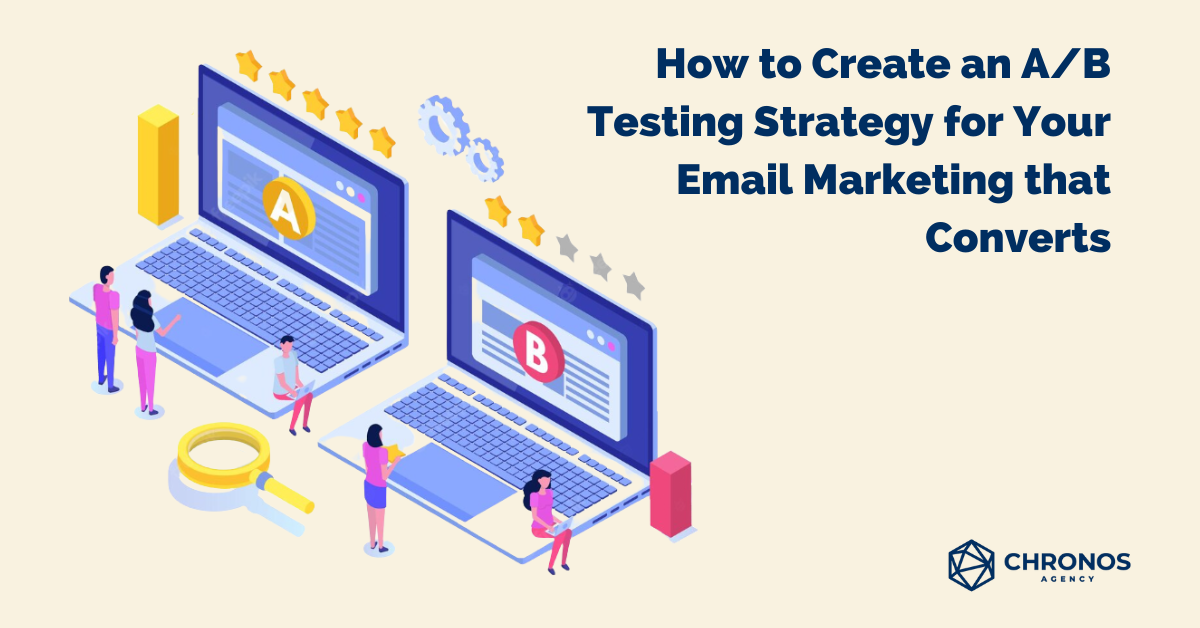7 to 8-figure brands rely on solid and consistent A/B testing strategies to create their profit-driven marketing strategies—and here’s how you can do it too.

Table of Contents
First of all, why A/B test your emails? You’ve got those plug-and-play strategies set up and ready for main launch, so no worries…right?
Before you hit the big red button, hear us out!
A/B testing can help you accomplish two major things. (1) It can help you synchronize strategies with your brand’s needs, and (2) it can help you continuously improve your strategies and bring out the best your marketing has to offer.
It’s the key to creating a sustainable and competitive advantage in a digital space that’s now saturated with countless brands vying for customers’ attention.
So, how exactly can you execute a solid A/B testing strategy for your email marketing? What’s the thinking process behind creating profit-driven tactics for your digital marketing?
I. Follow a Consistent and Data-driven Process
Consistency is key to maintaining an effective A/B testing strategy. It can help you chart and plan the actions you’ll take to achieve your specific goals when conducting your tests.
STEP 1: Decide What to Test
Zero in on what aspect of your email marketing you want to test.
For example: Do you want to test your subject lines? How about its format? How many images and how much text is too much or too few to your customers’ liking?
Send times, your CTAs, your GFX and overall email composition. Even your sender name would need testing, your multimedia element formats, and copy tonality.
It might sound overwhelming, but it’s easier to A/B test when you’ve determined the one thing you want to test in the first place.
Here’s the anatomy of an email highlighting the parts you can A/B test. However, the things you can A/B test can go beyond what’s in your email.

STEP 2: Build Your Hypothesis
Sound familiar? This is straight from your basic scientific method. Make a smart guess as to what you think the results would be based on what you’re testing.
“My recipients are more likely to open my emails if I use my personal name in my sender info.”
“My emails will get more clicks if I use more GIFs.”
A hypothesis can help give your A/B tests a direction to follow.It can also give you a reference point you can compare to once you’ve got your test results—giving you valuable insights.
STEP 3: Determine Your Success Metric
What will determine if your test is a success? Set your success metrics to give your A/B tests a goal to reach.
Are you aiming for a specific high range of email open rates? Or do you need higher click rates?
In this case, it all depends on which email metric you feel needs a boost. So set your metric goal, but keep it realistic.
STEP 4: Create the Variations
A/B testing requires at least two different variations of whatever you’re testing—hence “A/B” testing.
Example:
Email A will be longer in terms of content. And Email B will be shorter.
Which email will your recipients prefer reading?
From there, you can compare which variation performed better. Additionally, you’ll get a better grasp of your target audience and their preferences when it comes to your promotional content.
STEP 5: Choose Your Recipients
This is closely tied to knowing your segments. Which of your segmented lists are you sending these emails to?
And what would those specific segments prefer to see in your promotional content?
The keyword in profit-driven A/B testing is to be specific. Because when you know what you need to test, you’ll generate more accurate and reliable results.
STEP 6: Take Actions Based on Your Results
So, you’ve got your A/B results…now what? Use those results to craft our recreate your strategies to boost your marketing’s overall performance.
Did your target recipients show more engagement with your shorter email formats? Then focus on making easy-to-read and skimmable promotional content for them.
Did you get higher open rates with emails you sent during evenings compared to afternoons? Focus your send times in the evening to accommodate your recipients’ more active online times.
II. Document Your Findings
Of course, it goes without saying that you’ll need to keep track of your results. You’ll always need a reliable point of reference to compare performance results to later down the line.
This can help you avoid unnecessary repetition of A/B testing.
However, it’s also like watching how the eCommerce space develops. Your target market’s preferences will slowly shift. Current events could reshape how DTC stores like yours should adapt.
Looking back at well-documented A/B tests can give you a point of reference and, in turn, give you the insights you need to steer your brand through whatever the unforeseeable future has in store for you.
III. Find an A/B Testing Template You Can Use
While plug-and-play marketing strategy templates need more testing, you can’t go wrong with picking up an A/B testing template.
Think of A/B testing templates as recipes. While successful strategies are like cakes.
It’s not guaranteed that your target audience will enjoy the ready-made cake you got them, but at least you have the recipe to bake the cake they prefer.
And if you’re looking for a solid A/B test tracker template, feel free to refer to the one we’ve provided in our A/B Test Guide:
Key Takeaways
Lifecycle marketing is responsible for the long-running and sustainable eCommerce success of many 7 to 8-figure brands.
Customer-centricity is key to future-proofing your DTC store.
Customer retention is more cost-efficient and overall presents a more long-term and sustainable growth solution for eCommerce businesses.
Leverage direct marketing channels to establish direct communication with your customers as well as bring forward products and services that they would be interested in.
Omnichannel marketing is important to help tie all your existing marketing channels together for a seamless and consistent customer experience.

